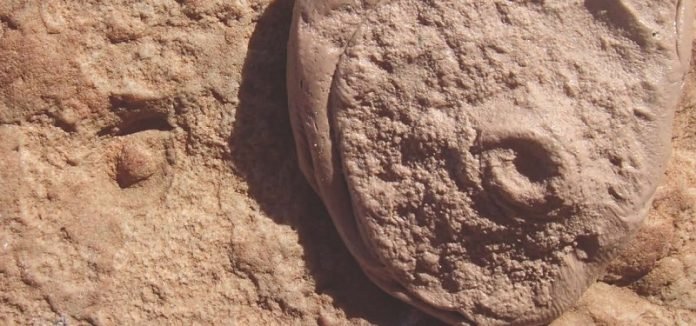
In a fascinating discovery, scientists have found that some of Earth’s earliest animals, despite lacking any ability to move, were particular about their habitats.
These mysterious creatures inhabited the oceans during the Ediacaran Period, about 550 million years ago.
Imagine trying to study a creature that has no existing relatives. That’s what Phillip C. Boan, a paleontology graduate student at UC Riverside, is doing.
He is part of a research team that is unraveling the mysteries surrounding these extinct, sea-dwelling creatures.
Unlike studying dinosaurs, which have a living connection to birds, studying these ancient animals is like trying to solve a puzzle with no reference picture.
Boan’s research focuses on understanding where these ancient creatures lived in the ocean. The prehistoric sea was a different world compared to today’s marine environments.
A thick mat of bacteria and organic material covered the sea floor, and predators were rare.
Among these ancient creatures, scientists found one that lived similarly to today’s barnacles, named Obamus coronatus (Obamus for short).
This peculiar creature, about the size of a half-inch doughnut with decorative ribbons on top, would stay in one spot on the sea floor for its entire life. Surprisingly, Obamus had a preferred habitat, typically choosing areas with a thick bacterial mat.
“We might not expect such ancient creatures to be choosy about where they live. But Obamus shows a quite sophisticated lifestyle for something so very old,” said Mary Droser, a professor at UCR and co-author of the study.
In 2018, Droser’s team named the creature Obamus, inspired by former U.S. president Barack Obama’s love for science. The creature was discovered in a remarkably well-preserved fossil site in the Australian Outback, now known as Nilpena Ediacara National Park.
Natural events like storms layered the ocean floor at Nilpena with sediment, preserving whole communities of these ancient creatures in sandstone. It’s like having a window into the past, offering a glimpse of the entire ecosystem as it was millions of years ago.
The researchers examined three distinct animals found at Nilpena in large numbers, analyzing their geographic distribution.
The other two creatures, Tribrachidium and Rugoconites, like Obamus, lived their entire lives embedded in the sea floor. However, unlike Obamus, they did not always live near others of their kind.
Researchers suggest that the need to reproduce could be the driving force behind Obamus’s habitat preference.
According to Droser, even though there are many elaborate reproductive strategies today, the fundamental methods used by animals haven’t changed much since the time of Obamus.
It’s believed that Obamus offspring may have chosen specific locations with a thick microbial mat and the presence of other Obamus to settle.
Studying the evolution of life on Earth can provide valuable insights into potential life development on other planets. That’s why Droser’s lab is funded by NASA’s Exobiology program.
Boan expressed, “We only have Earth as our reference, and we need to explore every aspect of its history when contemplating life elsewhere in the universe.”
This study takes us one step closer to understanding how complex ecosystems evolve, from Earth’s ancient seas to possibly, alien worlds.
Source: UC Riverside.



